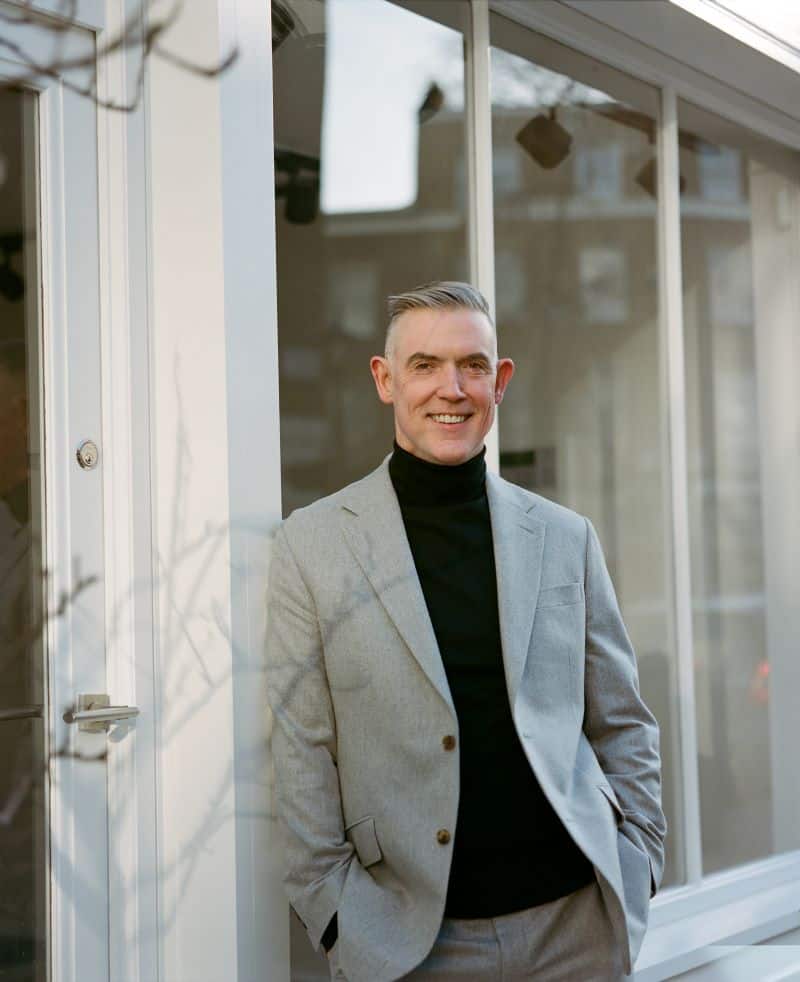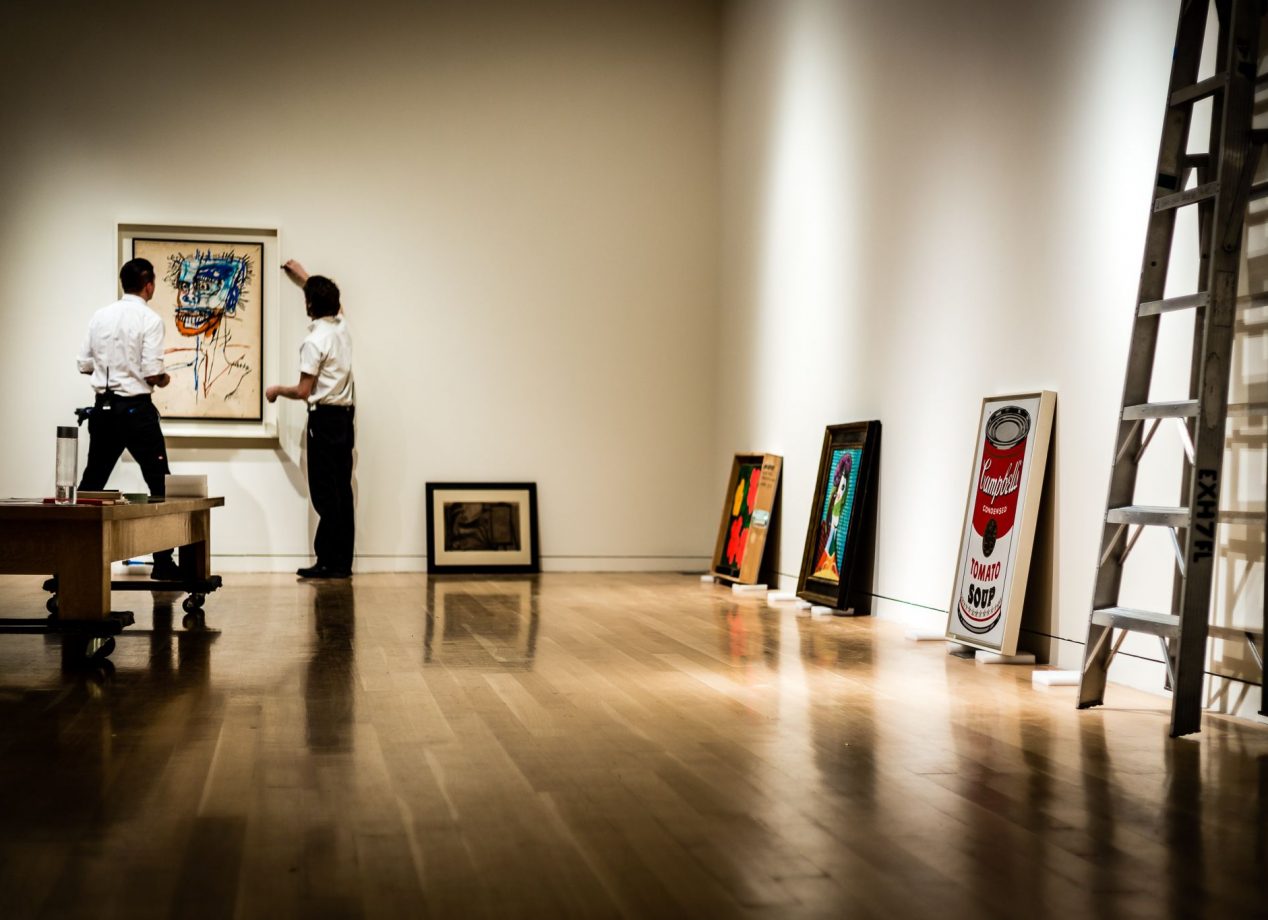After three decades of working at the world’s top galleries and auction houses, MA Contemporary Art alumnus Matt Carey-Williams is pursuing a personal curatorial project – an eponymous gallery in London with the aim to bridge the gap between artists and global audiences. Read more about Carey-Williams' new venture and the key career insights of a visionary in the contemporary art scene.
 Can you tell us about your new global curatorial project and what we can expect to see on view first?
Can you tell us about your new global curatorial project and what we can expect to see on view first?
My eponymous (ad)venture presents a year-round program of contemporary art presentations in London as well as venues around the world. My goal is to empower unexpected encounters between an array of artists – be they emerged or established – with international audiences. The program unfolds at two different scales and speeds: single-artist ‘Scenes’, staged throughout the year at my studio space on Porchester Place in London, and group-show ‘Episodes’ in changing international locations. Scenes will usually introduce an individual body of work while Episodes unveil broad, thematic narratives. Both presentations will be elucidated with an in-depth curatorial essay written by me that, hopefully, offers fresh perspectives on the lexis and praxis of contemporary art as well as the world around us.
Can you briefly walk us through starting your own gallery, from the conception to preparing for opening day?
I’ve had the idea of running my own project for over fifteen years, however I have always been lucky enough to work in dynamic workplaces that, because of my content in operating at them, delayed turning desire into design. I made the decision to go for it in January 2023.
Opening a physical space can also be a bit of a lottery, but I was fortunate to find just the right sized studio space for my needs in October. We moved in at the beginning of the year and have since been preparing the space for its first opening on February 6.
What is your vision for the future of this project?
I want Matt Carey-Williams to be an elastic brand whose curatorial thrust allows its team, space, and a wide variety of artists and professionals to bring to life thematic adventures that would ordinarily get looked over. This project is not one that will represent artists like a gallery, nor does it intend to show work at art fairs. It is a curatorial project driven entirely by presentation and seeks to empower all the protagonists who contribute towards it.
I want the dynamic of how exhibitions are staged to be freer and more fluid whilst maintaining the same mechanical rigour that I have been used to – and learned – during my long career. I’m not looking to change the table, just looking to seat people differently at it. The goal of interesting, rewarding exhibitions remains the same.
What types of artists do you plan on featuring?
Artists from emerging new voices to those who have been presented many times in galleries and museums over many years.
Can you give some insight into the themes that will be presented throughout your shows?
The content of the Scenes will be determined by the artist. It’s my job to help them bring their vision to life in these solo presentations. The Episodes, however, are very much a reflection of my own thoughts about art and the world in which we live. I like the idea that my Episodes – indeed, any exhibition – can be fuelled by some of the power of protest without being identified exclusively by it. I want to serve both the grit and the pearl it generates from my oyster. That’s why my first Episode is called Bump.
You’ve held various positions at Sotheby’s, Gagosian Gallery, White Cube Gallery, Phillips, and most recently Victoria Miro (to name a few). What are some of the most valuable things you’ve learned from working at the world’s leading galleries and auction houses?
The key to success is being happy in what you do. Smiles and laughter at work are essential to any professional environment’s success and to the people who occupy it. If you keep your happiness, as well as your colleagues’, at the forefront of your experience then teamwork flows more naturally and easily.
This is, of course, another key ingredient in the success of any gallery, museum or auction house team. There may only be one principal with their name above the door, but it takes a squad to keep that name up there. If you’re the principal, acknowledge and be ever grateful for that team synergy and collaboration. If you’re part of the team supporting that individual or brand, be both glad that you’re in the team and know that your effort and performance (no matter how marginal you may feel it is at the beginning of your career) genuinely means something. To you, your colleagues, the team’s ‘goals’ and, ultimately, to everyone’s collective success.
When you start out in this industry, you’ll get told ‘no’ a hundred times before you get the ‘yes’ you’re seeking. Whether selling, seeking consignments, curating, or writing, be driven by that ‘yes’, no matter how far away or difficult to grasp it feels. Don’t take this industry all too seriously. Remember, we’re both blessed and burdened by the fact that what we do for a living is, essentially, someone else’s hobby.
How did the MA Contemporary Art program at Sotheby’s Institute equip you with the tools and knowledge to navigate the art industry?
I graduated in October 1997 from Sotheby’s Institute and was lucky enough to be the first ever Derek Shrub Memorial Scholar when I started my MA in September 1996. Sotheby’s Institute provides vocational advice and opportunities. Many of my fellow students interned at contemporary art galleries in London whilst studying. I was invited to interview for a Graduate Trainee position at Sotheby’s in May 1997, before I had even taken my exams. I got the job and decided to take it, rather than pursue a Ph.D., 27 years later I’m grateful I took the job but I’m still looking forward to doing that Ph.D. at some point in the future.
Alongside the work experience opportunities that Sotheby’s Institute initiates, the tenor of the course itself sets you in great stead, as a student with an eye on forging a career in the visual arts. The program explored different types of art writing in addition to academic exploration and critique. We were tasked with writing auction house catalogue entries, press releases, and exhibition essays. We were lucky to have a medley of guest lecturers speak to us – curators, gallerists, artists, museum personnel, and auction house specialists – all of whom provided rich and invaluable insights into their own professional trajectories.
As a student at Sotheby’s Institute, you quickly learn that the art world is indeed a multifaceted experience and one which provides a tapestry of professional possibilities within it. We were also encouraged to attend as many gallery openings as possible during our time as a student and I remember being told that the task of building your network didn’t begin after you had graduated but whilst you were still a student. A piece of advice that served me well then and which still does for new students to this day.
What advice would you give to someone in the early stages of their art business career?
Apply to the beginnings of your career the same rules that the Green Cross Code provides a child when teaching them how to successfully cross a road:
- Think. Make sure you think every decision through before acting upon them. Allow your intuition to inspire you but always qualify any gut reaction by thinking.
- Stop. Take stock of what you’re doing and where you are, especially when you are about to embark upon an important project.
- Look. Look for opportunities, collaborators, guidance, and success.
- Wait. Patience is key, especially in a professional field where some of your colleagues have been patiently waiting for their next project or promotion for decades.
- Look and listen again. Never stop looking, listening, and learning. This is only achieved by investing your time in your mentors’, peers’, and collaborators’ matrices.
- Arrive alive. You’ve got through your first auction cycle, you’ve sold your first work of art, you’ve written your first press release, and you’re still alive and ready to cross another road on the long journey that is your career.
Click here to learn more about our MA programs.
